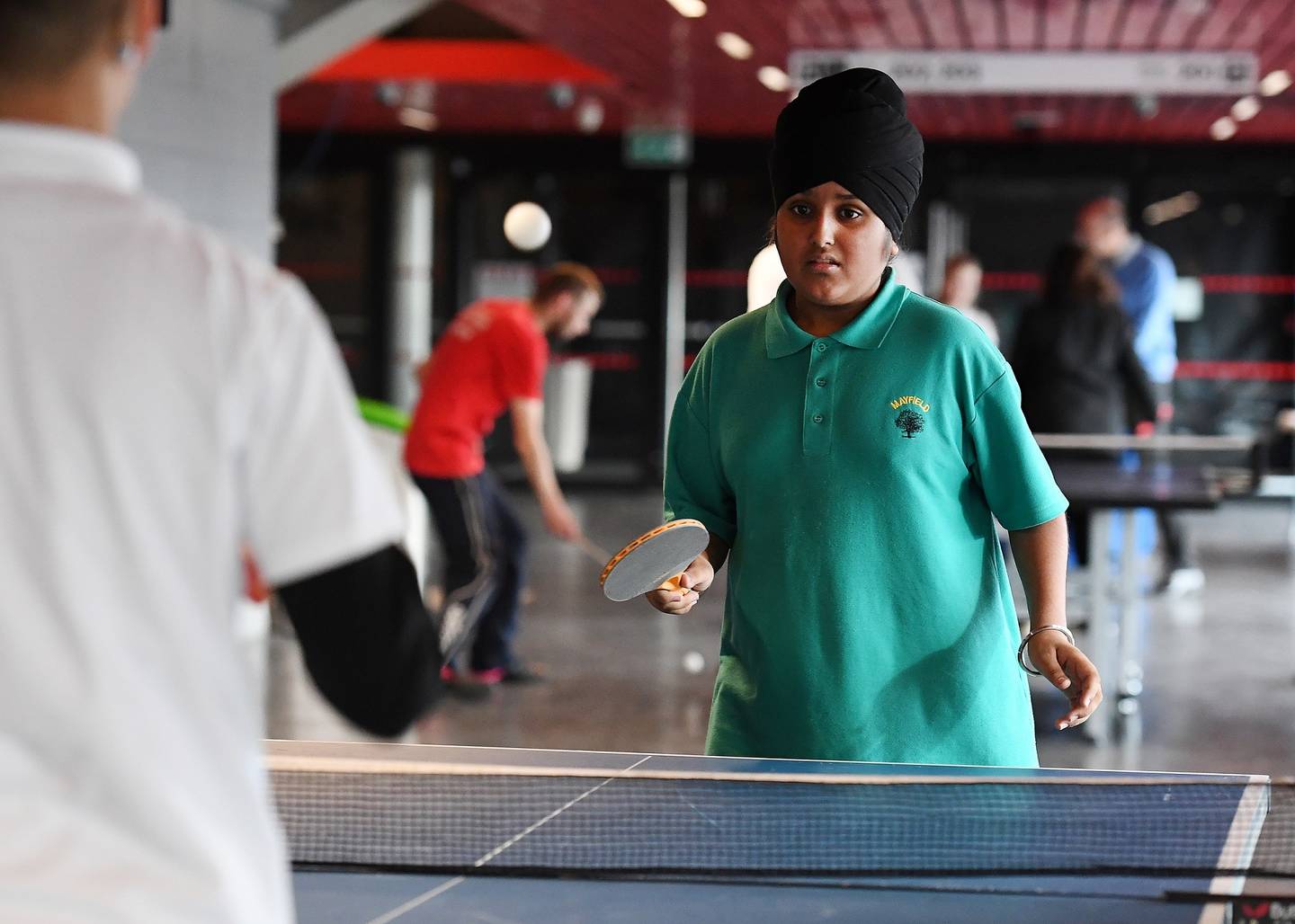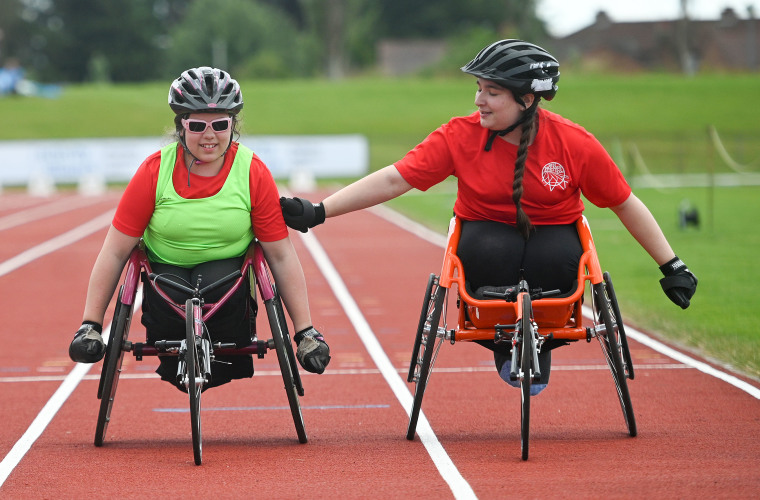Fears for future generation as report shows disabled children miss out
A new ground-breaking report shows failings across sectors will continue to steer disabled children into an inactive adulthood if we do not act now. My Active Future, from Activity Alliance, calls for more commitment from every sector of our society to ensure all children and young people benefit from an active lifestyle.

For the first time, My Active Future gives an in-depth picture of disabled children and young people’s current activity and desires for the future. The report investigates the differences in experience and perceptions of sport and activity among disabled and non-disabled children. This includes their attitudes, enjoyment and participation, as well as their barriers and motivations.
The new findings reinforce the activity gap between disabled and non-disabled children. Disabled children are less active than their peers, and experience more barriers. They are less likely to enjoy being active in and out of school, and are less likely to be included in PE and games. Worryingly, this exclusion could lead to disabled children more likely to be lonely and socially isolated.
The findings include:
- One third of disabled children take part in less than 30 minutes of sport and physical activity per day. 30% of disabled children are ‘less active’ compared to 21% of non-disabled children (take part in less than 30 minutes of sport and physical activity per day during term time).
- Disabled children’s activity levels decrease significantly, as they get older. Activity levels for disabled and non-disabled children are similar when they first start school (Key Stage 1 83% during term time compared to 84%). By age 11, disabled children are less likely to be ‘active or fairly active’ (Key Stage 2 - 77% vs 85%). The gap widens more significantly by the time they are 16 (Key Stage 4 - 52% vs 72%).
- Disabled children are twice as likely to be lonely compared to their non-disabled peers (72% vs 36%). They are more likely to feel they have no one to talk to, feel left out, and to feel alone.
- Disabled children are motivated to take part in sport and physical activity to feel a sense of belonging and be more independent.
- Nine in ten parents of disabled children say their child’s level of physical activity is important to them. Yet, less than half of parents with disabled children feel they have enough support to help their child to be active.
- Only a quarter (25%) of disabled children say they take part in sport and activity all of the time at school, compared to 41% of non-disabled children.
- Disabled children are less likely than non-disabled children are to be active at a park, leisure centre or friend’s house.
- Worrying about getting hurt, how they look and not knowing what to do stops many disabled children being active.
Disabled children and young people, aged 5 to 16 years, and their parents and guardians were involved in the report. A total of 760 disabled children and parents took part in the online survey, along with more than 900 non-disabled children and their parents. This allowed a comparison of experiences, pinpointing gaps in opportunities and support.
Despite the difference in participation and enjoyment, there is less difference between what disabled and non-disabled children want to do more of. This shows there is work to do in many settings to include disabled children, and to ensure quality experiences.
The research highlights the importance of tackling the activity gap that widens as disabled children get older. Bad experiences, worries about appearance and being treated differently, and increasing social isolation contribute to this. A lack of suitable opportunities and appropriate inclusive activities could also be a factor.
The report complements Sport England’s annual Active Lives Children and Young People Survey. Their 2019 Survey found that 3.3 million children (47%) lead active lives. These children meet the Chief Medical Officers’ guidelines of doing an average of at least 60 minutes of physical activity a day, across the week. However, 2.1 million (29%) of all children are active for less than 30 minutes a day.
 There are almost one million disabled children and young people in England[i]. The benefits of sport and activity in children’s physical, mental, social, and emotional development are well documented. Sport and activity is linked to cognitive benefits, learning ability, and better grade attainment for disabled children.
There are almost one million disabled children and young people in England[i]. The benefits of sport and activity in children’s physical, mental, social, and emotional development are well documented. Sport and activity is linked to cognitive benefits, learning ability, and better grade attainment for disabled children.
Barry Horne, Activity Alliance’s Chief Executive, said:
"We know that some programmes are working, but clearly right across society, there isn’t enough focus to change this worrying situation. Programmes like Sainsbury’s Inclusive PE play a critical role, as does the Sport England funded Secondary School Teacher Training initiative. But this evidence makes it clear that there is so much more to be done.
"We need to see significant interest now for long-term impact. Talking to disabled adults, who were disabled as children 30 years ago, will tell you that nothing much has changed in this time. This is not acceptable or fair, and a sad reflection on how we are failing our future generations.
"Encouraging inclusion for every child at an early age can build lifelong habits and ensure more children and young people enjoy an active future. Research shows that the earlier we lead an active lifestyle, the more likely we are to develop a lifelong future. So this isn’t just vital for disabled children, it is crucial for every child, who may look for inclusive opportunities in the future."
Jayne Molyneux, Sport England’s Director Children and Young People, said:
"We at Sport England are fully in support of both the importance of this research and a need for concerted action following its findings.
"Knowing, for example, that only a quarter of disabled children say they take part in sport and activity all the time at school compared to 41% of non-disabled children is a significant difference and just one example of the imbalanced activity levels being an uncomfortable reality. Our Active Lives Children and Young People shows that active children are happier, more resilient and trusting of each other so its vitally important that all children have the right opportunities and support to take part in the sport and activity of their choice.
"Being armed with more research and additional insight is a wholly positive thing that we must not dismiss, however even more important is that the research is acted on. We at Sport England should ensure all in the physical activity sector understand the recommendations in this research that support children’s inclusion in sport and physical activity and to commit tackling the activity gap to encourage an active future."
The report suggests and outlines the below recommendations:
- Engage with and listen to all children
- Build confidence and independence from a young age
- Engage leaders on the need for inclusion and show how to create comfortable environments
- Support and encourage parents to help their child to live an active life
Download the full recommendations and report here.
Join the conversation and share your response to this report, use #MyActiveFuture on social media.
Activity Alliance will continue to work with key players and organisations to open up conversations on this subject. If you are interested in working with our advisors, please contact Activity Alliance on info@activityalliance.org.uk or call 01509 227750.
[i] Department of Work and Pensions Family Resources Survey 2017-2018